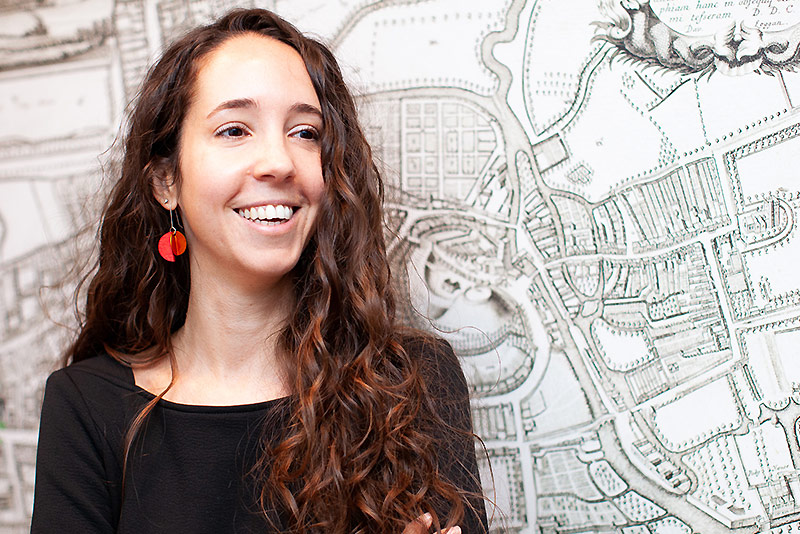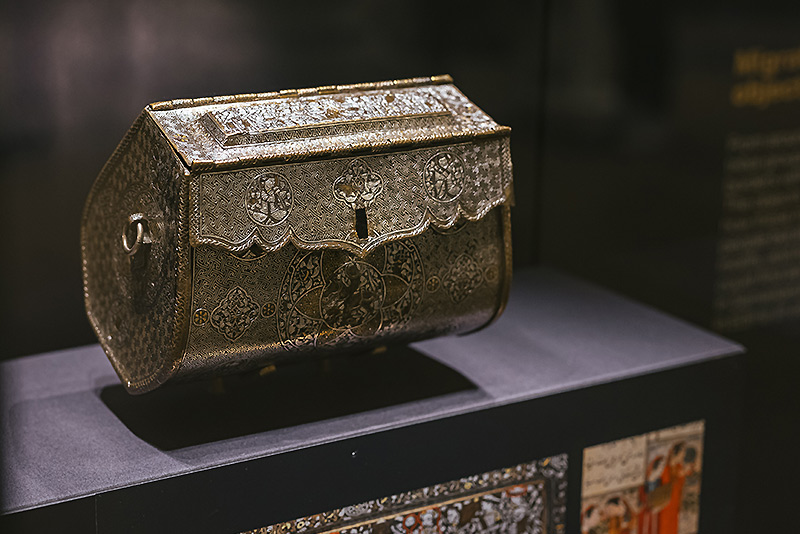Investing in the next generation of museum curators
At a time when the heritage sector is struggling to nurture and retain curatorial expertise, philanthropy is enabling two Oxford museums to buck the trend and provide much-needed support to the next generation of curators.
‘I think the Ashmolean Museum had a really revolutionary idea,’ says Dr Federica Gigante of the job that kickstarted her curatorial career. ‘The idea was not only that of training a future curator, but to experiment with a different kind of curatorial position, one that is not focused on a single department or collection alone but based instead across the entire museum.’
Dr Gigante, an historian of Islamic art, was the first person to hold the Ashmolean’s Cross-Collections Trainee Curatorship: a two-year role aimed at providing a talented young individual with wide-ranging curatorial experience and transferable skills. The post was established in collaboration with the Headley Trust in 2017 to address dwindling support for curators and training opportunities across the heritage sector.
‘There are so very few curatorial jobs available, especially if you work in a specialised area such as eastern art,’ says Dr Gigante, whose research focuses on cultural and artistic exchanges between the European and Islamic worlds. ‘In order to explain the concept to people I point out that it is statistically easier to become a striker in the Premier League than a curator in your own field.’
In taking up the trainee curatorship, Dr Gigante hoped she would gain some of the skills needed to move forward with her chosen career. The reality far surpassed her expectations.
 Dr Federica Gigante. Photo by Emily Jarrett
Dr Federica Gigante. Photo by Emily Jarrett
‘An amazing learning opportunity’
During her time in post Dr Gigante worked with each of the Ashmolean Museum’s four curatorial departments: Eastern Art, Western Art, Antiquities and the Heberden Coin Room, as well as in the Cast Gallery. In doing so she received a breadth of hands-on curatorial experience that would have been hard to match anywhere else in the country. ‘It was an amazing learning opportunity, just incredible’ she reflects.
‘The visionary approach was to give me projects within each department that matched my expertise. In Western Art they put me to work on some prints that featured portraits of Turkish sultans, and in the coin room I catalogued Ottoman coins. This partly had the goal of acquainting me with the whole museum, but it also allowed me to maintain a level of specialisation that meant I could continue with my academic career.’
Dr Gigante was also fortunate to be mentored by Dr Francesca Leoni, the Ashmolean’s Curator of Islamic Art, and worked alongside colleagues from right across the museum. This enabled her to feel fully immersed in the life of the Ashmolean and was an important component of her success.
By the second year of her trainee curatorship, Dr Gigante had acquired the skills she needed to take a leadership role in the curation of two exhibitions: From Istanbul to Oxford, which focused on the origins of coffee drinking in England, and Dimensions, which invited visitors to explore what it means to move in one, two, three and more dimensions using objects from across the collections. The latter, which was developed in collaboration with Oxford’s Mathematical Institute, was one of the most successful exhibitions to have been shown in Gallery 8 by the end of its 12-week run.
‘I really tried to cover the entirety of the cross-collections scope, from modern times to prehistoric ones, from archaeological material to prints and textiles,’ explains Dr Gigante. ‘It just worked so marvellously well, and the response from the public was most rewarding… hearing people say, “I always hated maths, I could never understand it, but I understand what’s going on here” gave me the biggest satisfaction.’
‘It happens very few times in life…’
As had been hoped, Dr Gigante’s experience at the Ashmolean proved invaluable in securing her next role. In late 2019, with only weeks left of her trainee curatorship, she successfully applied for a new position at the History of Science Museum: Curator of the Collection from the Islamic World, a two-year post supported by the John Ellerman Foundation.
‘The museum didn’t know I existed on a personal level, but when they called out for applicants and I read the job description I thought: oh, that’s me! That happens very few times in life,’ says Dr Gigante, who is in no doubt as to the vital role that the trainee curatorship played in her success. ‘They wanted someone who had experience in exhibition organisation within a university setting, as well as experience working with local communities. They also wanted someone who could come up with themes and stories – something I would never have been able to do if I had applied straight from my PhD.’
Although her first few months in post were not quite as she had expected (‘I couldn’t wait to put my hands on the objects when the lockdown kicked in!’), Dr Gigante hit the ground running under the guidance of the museum’s Director, Dr Silke Ackermann, herself a renowned expert in science in the Islamic World. She began studying the museum’s collections online and – in close collaboration with colleagues – preparing for her first exhibition: Precious and Rare: Islamic Metalwork from the Courtauld Institute – Cultures in Conversation. Showcasing some of the world’s finest examples of this intricate craft, the exhibition has already attracted many positive reviews from audiences and the press. It is open now until 10 January 2021.
 A metal handbag from Mosul, Iraq, dating from between 1300 and 1330 CE. Photo by Ian Wallman
A metal handbag from Mosul, Iraq, dating from between 1300 and 1330 CE. Photo by Ian Wallman
As well as building expertise and skills in the curation of Islamic objects, Dr Gigante’s new role will also see her work closely with volunteers from the multi-award winning Multaka project. The idea, she says, is ‘for us all to learn together’ – a process aimed at making the museum a more inclusive space for everyone to enjoy.
This work will be of particular importance as the museum moves towards its centenary in 2024. To mark this special occasion, an ambitious strategy has been launched to transform the historic building into a fully accessible environment – one that will allow for the very best presentation of the museum’s world-class collections.
Dr Gigante will play a key role in this process of transformation and redevelopment, working with different communities and museum professionals, both in England and internationally, to develop display schemes that feature far greater intercultural dialogue. In doing so, she will be helping to build a lasting legacy that will have an impact upon the museum, its visitors, audiences and partners for many years to come.
SUPPORT THE HISTORY OF SCIENCE MUSEUM
SUPPORT THE ASHMOLEAN MUSEUM